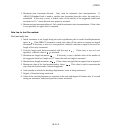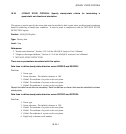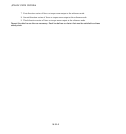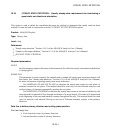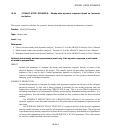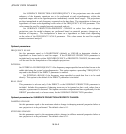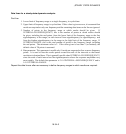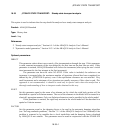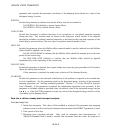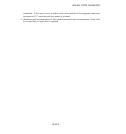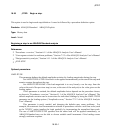*
STEADY STATE DYNAMICS
Data lines for a steady-state dynamics analysis:
First line:
1. Lower limit of frequency range or a single frequency, in cycles/time.
2. Upper limit of frequency range, in cycles/time. If this value is given as zero, it is assumed that
results are required at only one frequency and the remaining data items on the line are ignored.
3. Number of points in the frequency range at which results should be given. If
INTERVAL=EIGENFREQUENCY, this is the number of points at which results should
be given, including the end points, from the lower limit of the frequenc y range to the first
eigenfrequency in the range; in each interval from eigenfrequency to eigenfrequency; and
from the highest eigenfrequency in the range to the high lim it of the frequency range. If
INTERVAL=RANGE, this is the total number of points in the frequency range, including
the end points. The minimum value is 2. If the value given is less than 2 (or omitted), the
default value of 20 points is assumed.
4. Bias parameter. This parameter is useful only if results are requested at four or more frequency
points. It is used to bias the results points toward the ends of the intervals so that better
resolution is obtained there. This is generally useful when INTERVAL=EIGENFREQUENCY,
since the ends of each interval are the eigenfrequencies where the response amplitudes vary
most rapidly. The default bias parameter is 3.0 if INTERVAL=EIGENFREQUENCY and is
1.0 if INTERVAL=RANGE.
Repeat this data line as often as necess ary to define frequency ranges in which results are required.
18.34–3
ABAQUS Version 6.1 Module:
ID:
Printed on:



